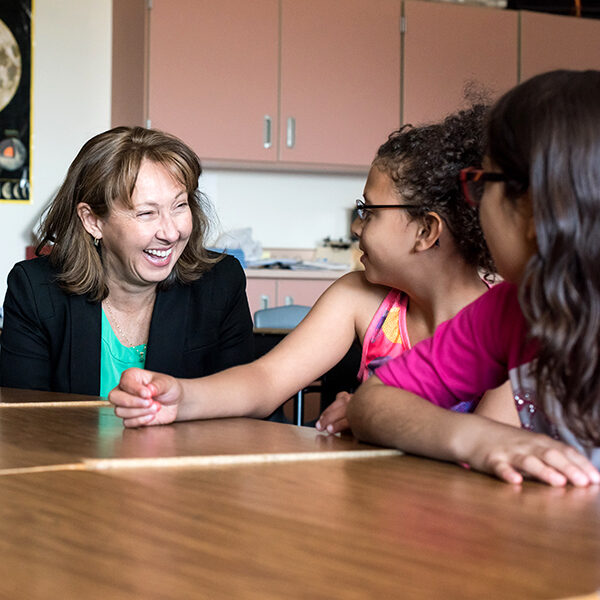
While the shift from “differentiated instruction” to “personalized learning” seems like a reasonable enough commitment to make philosophically, the changes in practice that this generation of teachers will need to make to realize the potential of personalized learning are daunting. In contrast with differentiation, which has been in teachers’ minds and vernacular for decades, very few K-12 teachers have experienced personalized learning models in their own education and a only small fraction of active teachers has been trained to facilitate student learning in this way. As a result, there are enormous technical and emotional barriers that need to be overcome among educators in order for students to have the opportunity to learn in environments that are highly engaging, personalized, and authentic.
Thankfully, we know more today about the way the brain works and how people learn than we have at any other time in human history. Unlike when I was coming up as a young teacher in the early 1990s, the question isn’t any longer whether we can differentiate learning for groups of students with diverse needs but whether we have the political will, the emotional intelligence, and the leadership wisdom to provide the support that teachers need, want, and deserve to shift their practice and the experience of their students in a more highly personalized direction.
Over the last three school years, BetterLesson has worked closely with over a thousand teachers in North America to shift their practice in the direction of greater personalization for their students. We knew going into this work that many of the teachers we were supporting would want coaching around the technical aspects of planning and implementing new systems and strategies, including the use of technology to drive student engagement, creativity, and achievement. We also knew that there would be emotional implications as we encouraged teachers to take risks and move away from teaching practices that they’d employed for years in some cases.
At the same time, we were surprised by a few key things:
1: The degree to which shame factored into many veteran teachers’ experience of shifting their classroom practices in a more personalized direction. Deeply embarrassed by their lack of technical skill with instructional technology, for example, some experienced teachers, many of whom had developed strong repertoires of what we might call “traditional” teaching practice, were deeply ashamed of their lack of familiarity with educational technology devices and tools, especially as they compared themselves to their younger colleagues, who seemed to them to know everything about using technology and data well. In supporting teachers who were experiencing the shift to PL in this emotionally debilitating way, our coaches found that taking a strengths-based approach (i.e., highlighting the types of personalization they are already extending to their students) could help them move past their self-doubt and into new areas of their practice.
2: Early-career teachers, though they were still building the core of their teaching toolkits, were in some cases fairly advanced in their personalized learning practices, possibly because they, unlike their more experienced colleagues, are digital natives and can more easily integrate new tools and practices into their approaches to teaching and learning.
3: Regardless of prior experience with personalized learning practices, the majority of teachers we coached last school year struggled most with three domains in BetterLesson’s “Personalized Learning Continuum”: Use of Data, Authentic Learning, and Student Agency. We expected that teachers would need support around data practices and student agency. There is often so much data in a truly personalized classroom that it can be hard for teachers to decide which data to focus on and when. Cultivating developmentally appropriate student agency and building systems and a classroom culture where students own their learning is an enormous shift for a generation of teachers who have been expected to articulate clear objectives for student learning for each lesson and to ensure that all students master those objectives, largely at the same pace.
However, it was interesting for us to discover that even the most advanced practitioners of personalized learning systems and strategies need support around how to make learning more authentic for their students. In many respects, their challenges are challenges for the field of public education more generally. We continue to reward students, teachers, and entire systems of schools when students demonstrate that they are competent in a wide array of disconnected content and skills standards that may have little relevance to them and their communities.
Indeed, it appears that many of the most skilled PL practitioners have designed their students’ learning experiences with the goal of their being able to master a common set of standards more quickly and thoroughly, not so much to tap into their students’ creativity and passions or to produce projects and products that matter to students and their communities and ask them to work collaboratively to solve real-world problems. Until such time as teachers and schools are given clearer directives that these powerful domains of student learning and experience are every bit as important as discrete pieces of content knowledge, we can expect to see this challenge continue well into the future.
Adapted from Personalized Learning on a Continuum: Strategies that Work for Different Teacher Archetypes, a recently released white paper published by BetterLesson.
Opinions presented in this blog post are those of the author and do not necessarily represent TLA’s opinion, nor should be considered an endorsement by TLA of any organization or product.

